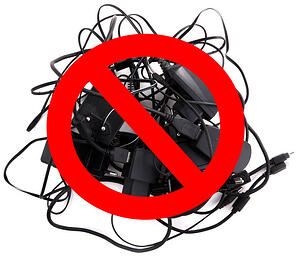 Wireless charging is on the brink. The end is near for short iPhone chargers and the need to replace them every other month. No longer will you have to fight over an outlet to charge your dying laptop or cell phone or run to the other room to quickly grab your charger before you lose your last 1%. Soon, you will be able to simply place your phone or laptop on a table and begin charging with the help of a wireless charging mat.
Wireless charging is on the brink. The end is near for short iPhone chargers and the need to replace them every other month. No longer will you have to fight over an outlet to charge your dying laptop or cell phone or run to the other room to quickly grab your charger before you lose your last 1%. Soon, you will be able to simply place your phone or laptop on a table and begin charging with the help of a wireless charging mat.
Also known as inductive charging, wireless charging uses an electromagnetic field to transfer energy between two objects, i.e. a cell phone, computer, or tablet. The charging station consists of induction coils that create the alternating electromagnetic field, which is then converted into an electrical current to charge the desired device. Advantages of wireless chargers include convenience, protected connections, and durability, while disadvantages include lower efficiency, wasted heat, and slower charging. Intel Incorporating Wireless Charging
Working with WiTricity, Intel hopes to create a unique wireless charging experience. What sets Intel and WiTricity apart from competitors will be the ability to charge a multitude of devices at once, meaning the device will be Rezence certified. Rezence technology promises that the devices do not necessarily have to touch the mat to charge because of the use of magnetic resonance. Long term goals for Intel include elimination of all wires and cords, including a completely wire-free laptop by 2016 with the help of a new processor, SkyLake. SkyLake will feature a wireless display and a docking station with WiGig (Wireless Gigabit) capabilities.
Standards
The Alliance for Wireless Power (A4WP) and the Power Matters Alliance (PMA) have joined forces. They have agreed to harmonize and hold the same standards in order to work side by side in the wireless industry. While the companies are not merging, they have agreed to collaborate and adopt each other’s technologies meaning we will soon see more built-in wireless charging devices released. PMA brings inductive charging technology to the table for customers, while A4WP allows for one pad to charge multiple devices based on magnetic resonance technology. Both companies, founded in 2012, are non -profit organizations hoping to gain the upper hand on the global wireless industry. Big names already incorporating wireless charging into their business models include McDonald’s and Starbucks.











